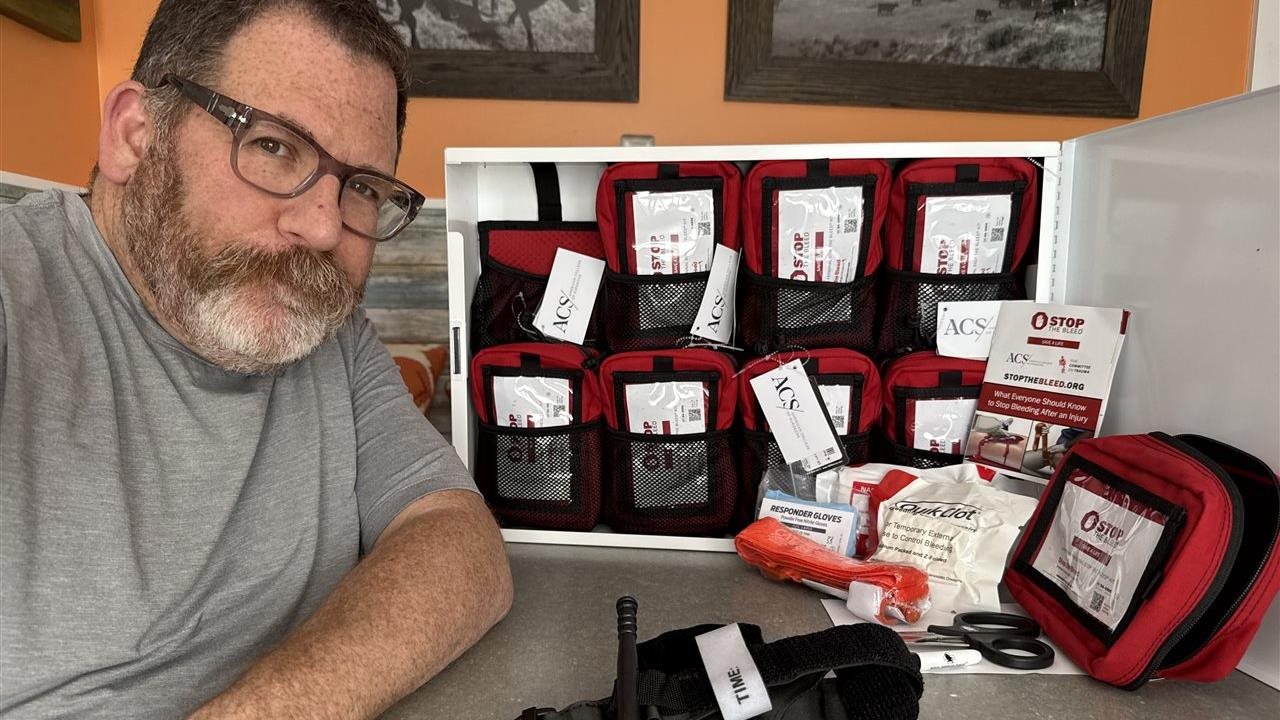2025-05-02T16:01:01
(BPT) – By David S. Shapiro, MD, MHCM, FACS
In trauma care, we often say the only thing more tragic than death itself is a death that could have been prevented. As a trauma surgeon, I think about this often when treating patients with severe bleeding. Not all traumatic injuries are survivable, but thousands of lives can be saved each year with better access to trauma care — especially by quickly controlling bleeding at the scene of the injury.
In recognition of National Stop the Bleed Month this May, I want everyone to know they have the power to help prevent deaths from uncontrolled bleeding with training from the American College of Surgeons (ACS) Stop the Bleed program.
Bleeding Injuries Are More Common Than You Think
Uncontrolled bleeding from traumatic injuries is a leading cause of preventable death. These injuries are more common than you think and occur in everyday settings — in the kitchen, when traveling to work or school or when enjoying sports and hobbies. An Arizona woman recently stopped severe bleeding in a teen after an e-bike crash, and beach patrol used ACS Stop the Bleed techniques on an injured surfer in Maryland so that he could safely make it to the nearest trauma center.
Someone Can Bleed to Death Within Minutes
Someone with severe bleeding can die within a few minutes, which is often faster than most emergency medical services can arrive on the scene. Decades of trauma research tell us that controlling bleeding within the first few minutes of injury dramatically improves the chance of survival. If we lose too much blood too fast, vital organs cannot function, and the chances of survival quickly diminish. The ACS Stop the Bleed program empowers the public to respond to a bleeding emergency using three simple actions. After calling 911 and ensuring the scene is safe, you can apply direct pressure to the wound, pack the wound, or apply a tourniquet if needed. These steps can be applied in any order based on the situation. No matter age or background, anyone can learn these three simple and highly effective techniques.
ACS Stop the Bleed Training and Kits Are for Everyone
Since 2017, the ACS Stop the Bleed program has trained nearly 5 million people in bleeding control. Importantly, the program requires no prior medical knowledge and is designed for everyone. Courses are often free and take less than an hour to complete — a fraction of the time most people spend commuting or on streaming services.
Paired with training, ACS Stop the Bleed kits are also essential tools in preventing bleeding deaths. These kits include equipment to control bleeding in emergencies, such as gauze and tourniquets, and are becoming more widely available in public areas, including airports, shopping malls and commercial buildings. Look for them near AED equipment and first aid stations.
Personal ACS Stop the Bleed kits also are important to have on hand as they contain items to control bleeding that generally aren’t found in most first aid kits. I keep one in my vehicle, one in my backpack and have even used one while kayaking.
Each of us can take action and control bleeding in unexpected emergencies. Together, we can save lives and prevent tragedies. Although I sincerely hope you never have to use your ACS Stop the Bleed training, you won’t regret learning these skills. The life you save could be a friend’s, a loved one’s — or even your own.
Find an ACS Stop the Bleed course near you and get your own ACS Stop the Bleed kit.
David S. Shapiro, MD, MHCM, FACS, is vice-chair of the ACS Stop the Bleed Committee of the ACS Committee on Trauma, the Connecticut Committee on Trauma Chair, and a surgeon based in West Hartford, Connecticut.


